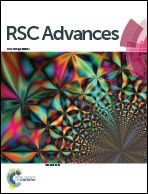Preparation of supported core–shell structured Pd@PdxSy/C catalysts for use in selective reductive alkylation reaction
Abstract
Supported noble-metal sulphide catalysts have attracted extensive scientific interest for their good selectivity in selective hydrogenation. However, the application of noble-metal catalysts is limited due to their lower activity, leading to harsh reaction conditions and poor conversion during hydrogenation reactions. In this study, Pd/C was sulphidized by H2S to prepare a series of core–shell structured Pd@PdxSy/C catalysts, which were characterized by BET, EDS, XPS, XRD and CO chemisorption to investigate the influences of sulphidation temperature, sulphidation time and sulphidation atmosphere on the structure of the resulting catalysts. The sulphidation of Pd/C at low temperatures resulted in a core–shell structured catalyst, Pd@PdxSy/C; with increasing sulphidation temperature, the size of Pd0 as the core decreased, and the thickness of palladium sulphides as the shell increased correspondingly. When the sulphidation temperature reached 150 °C, the resulting catalyst transformed to a complete palladium sulphide catalyst, PdxSy/C. The structure of Pd@PdxSy/C sulphidized at 30 °C was independent of sulphidation time and sulphidation atmosphere. The sulphidized catalysts were applied to the reductive alkylation of PADPA and MIBK to DBPPD. The sulphidized catalysts presented a much higher selectivity for DBPPD compared with Pd/C, and Pd@PdxSy/C showed higher activity than PdxSy/C; moreover, the greater amount of PdxSy content in the resulting catalyst led to a lower activity.


 Please wait while we load your content...
Please wait while we load your content...